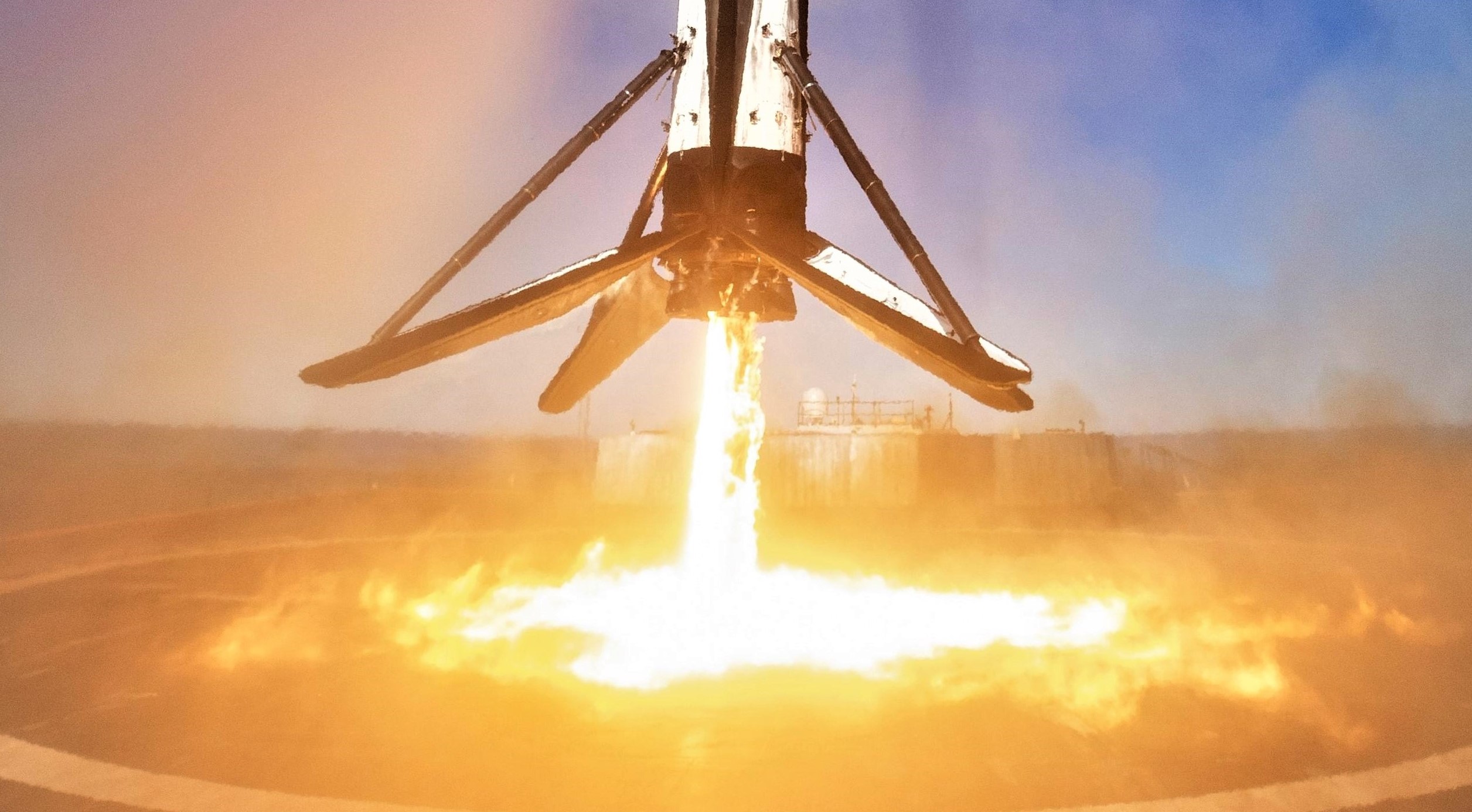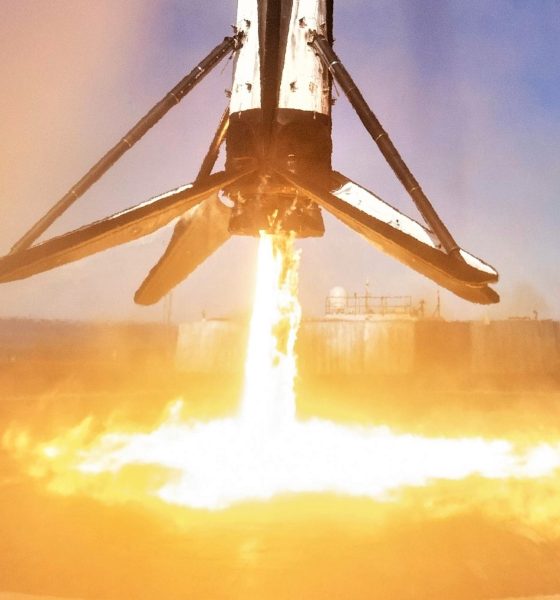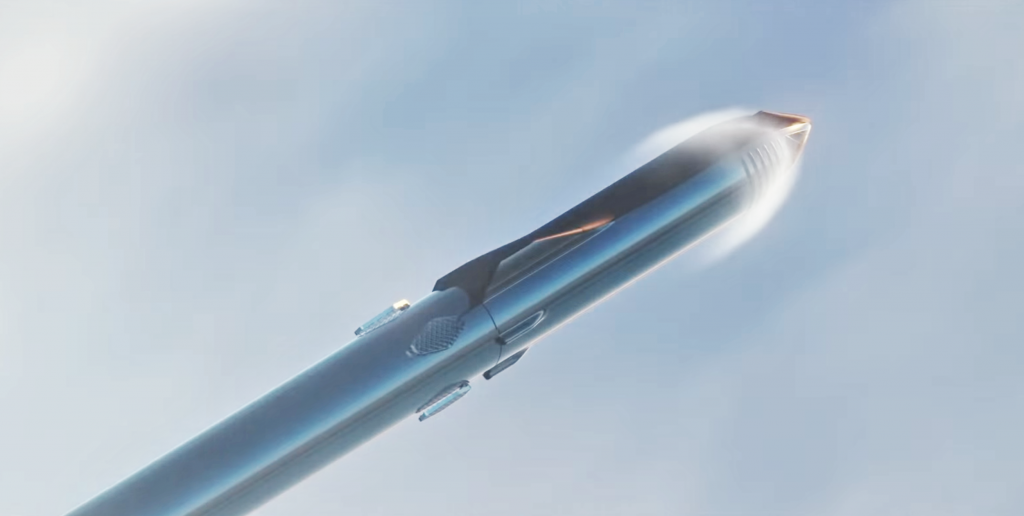

News
Elon Musk says a SpaceX Falcon 9 rocket is about to be "destroyed in Dragon fire"
SpaceX CEO Elon Musk has officially confirmed that the company’s next Falcon 9 launch will destroy the flight-proven booster and upper stage “in Dragon fire”, a cryptic reference to the ultimate purpose of the sacrifice.
Known as SpaceX’s In-Flight Abort (IFA) test, the mission is designed not to place any particular payload in orbit but to demonstrate that Crew Dragon – the company’s first human-rated spacecraft – can ensure astronaut safety even if faced with a worst-case scenario during launch. IFA will mark Crew Dragon’s second dedicated abort test and second launch on a SpaceX Falcon 9 rocket, although the mission’s brand-new spacecraft will have to suffice with a suborbital jaunt before hopefully splashing down intact in the Atlantic Ocean.
If everything goes as planned, SpaceX has every intention of reusing the IFA Crew Dragon capsule on a future mission, although it’s unclear what that mission might look like. It’s unlikely that a reused SpaceX spacecraft will fly NASA astronauts anytime soon but it’s possible that the company will refurbish the vehicle for an entirely private astronaut launch or transform it into the first uncrewed launch of a next-generation Cargo Dragon (Dragon 2). Regardless, given the challenges posed by the In-Flight Abort, Crew Dragon’s survival is far from guaranteed.
Given that such an abort scenario is by definition a possibility, it’s likely the case that SpaceX’s engineers are almost certain that Crew Dragon should be able to survive such an ordeal, but the spacecraft will likely be pushed to its limits and it’s often much harder to ensure that everything works as intended at those limits.
In-Flight Abort by the numbers
Formerly scheduled to fly since-destroyed Crew Dragon capsule C201, SpaceX was forced to shuffle its spacecraft scheduling, reassigning Crew Dragon capsule C205 – originally expected to launch SpaceX’s first NASA astronaut mission – to support the In-Flight Abort. Featuring upgrades designed to prevent the failure mode that led to C201’s violent explosion, C205 will now have to survive a series of extremely challenging environments.
The IFA test is designed to prove that Crew Dragon can escape a failing Falcon 9 rocket during the most mechanically stressful point of launch. Occurring around 80-100 seconds after liftoff and known as Max Q, it’s the point where Falcon 9’s velocity and altitude combine to create the most friction and pressure the rocket’s windward parts will experience on their climb to orbit. For Crew Dragon, this means its SuperDraco abort engines will have to work fight upwards against air that is functionally (but not literally) much thicker than it is at other points during flight – a battle that will simultaneously put even more pressure (mechanical stress) on the spacecraft’s surfaces.

Purely from a numerical perspective, the pressure at Max Q is typically around 30-35 kPa (4.5-5 psi), which doesn’t sound like much but can easily become a force to be reckoned with when the surface area of the rocket or spacecraft being impacted is as large as Crew Dragon (let alone Starship). For reference, Crew Dragon capsules likely have a conical surface area on the order of 30,000 square inches (~19 m²), meaning that the spacecraft is subjected to a total mechanical load of 50-60 metric tons (~130,000 lbf) at Max Q.
Traveling as fast as Mach 2.5 (860 m/s) at an altitude of 28 kilometers (17 mi) at the point where Crew Dragon will ignite its abort thrusters and attempt to escape, that very act of escape will likely magnify the mechanical stresses on the capsule even further. During Crew Dragon’s 2015 Pad Abort, for example, the spacecraft went from a standstill to 155 m/s (345 mph) in 7 seconds – an average acceleration of about 2.3 Gs. Crew Dragon C205 could thus find itself traveling almost Mach 3 (more than a kilometer per second) just seconds after separating and may ultimately reach a peak altitude of almost 75 km (45 mi).
This is all to simply say that Crew Dragon is going to be subjected to an array of varying extremes in a very short period of time, during and after which it must still successfully control its orientation, avoid tumbling, detach its trunk section, and deploy a series of parachutes to achieve a fully-successful test. Additionally, the In-Flight Abort test will see Crew Dragon launch on an almost orbit-worthy Falcon 9 upper stage (lacking only a functional Merlin Vacuum engine) and thrice-flown booster B1046.
According to CEO Elon Musk, it simply is not going to be possible to prevent the historic booster – the first Falcon 9 Block 5 rocket ever launched – from being destroyed shortly after Crew Dragon attempts its escape. Once Dragon departs Falcon 9, the upper stage will likely be torn to shreds by the supersonic airstream suddenly buffeting it, ultimately exposing Falcon 9 B1046’s unchanged interstage – effectively a giant, open cylinder closed at its base.
Likely still travel supersonic, the results of the airstream entering Falcon 9’s interstage and finding no exit will likely be akin to a glass cup smashing mouth-first into a brick wall with a bowling ball taped to its bottom. Thankfully, Falcon 9 B1046 has already successfully supported three orbital-class launches since it debuted in May 2018, completing its third flight just seven months later. The booster will be missed and the opportunity cost (at least several more orbital-class launches) is definitely non-zero, but its sacrifice sill be for a good reason.
As Musk notes, if the In-Flight Abort goes as planned, it could pave the way for Crew Dragon’s first NASA astronaut launch – known as Demo-2 – as few as 6-8 weeks later. For now, Crew Dragon’s IFA test is scheduled to launch no earlier than (NET) January 18th, likely around 8 am EST (13:00 UTC).
Check out Teslarati’s Marketplace! We offer Tesla accessories, including for the Tesla Cybertruck and Tesla Model 3.

News
Tesla FSD fleet is nearing 7 billion total miles, including 2.5 billion city miles
As can be seen on Tesla’s official FSD webpage, vehicles equipped with the system have now navigated over 6.99 billion miles.

Tesla’s Full Self-Driving (Supervised) fleet is closing in on almost 7 billion total miles driven, as per data posted by the company on its official FSD webpage.
These figures hint at the massive scale of data fueling Tesla’s rapid FSD improvements, which have been quite notable as of late.
FSD mileage milestones
As can be seen on Tesla’s official FSD webpage, vehicles equipped with the system have now navigated over 6.99 billion miles. Tesla owner and avid FSD tester Whole Mars Catalog also shared a screenshot indicating that from the nearly 7 billion miles traveled by the FSD fleet, more than 2.5 billion miles were driven inside cities.
City miles are particularly valuable for complex urban scenarios like unprotected turns, pedestrian interactions, and traffic lights. This is also the difference-maker for FSD, as only complex solutions, such as Waymo’s self-driving taxis, operate similarly on inner-city streets. And even then, incidents such as the San Francisco blackouts have proven challenging for sensor-rich vehicles like Waymos.
Tesla’s data edge
Tesla has a number of advantages in the autonomous vehicle sector, one of which is the size of its fleet and the number of vehicles training FSD on real-world roads. Tesla’s nearly 7 billion FSD miles then allow the company to roll out updates that make its vehicles behave like they are being driven by experienced drivers, even if they are operating on their own.
So notable are Tesla’s improvements to FSD that NVIDIA Director of Robotics Jim Fan, after experiencing FSD v14, noted that the system is the first AI that passes what he described as a “Physical Turing Test.”
“Despite knowing exactly how robot learning works, I still find it magical watching the steering wheel turn by itself. First it feels surreal, next it becomes routine. Then, like the smartphone, taking it away actively hurts. This is how humanity gets rewired and glued to god-like technologies,” Fan wrote in a post on X.
News
Tesla starts showing how FSD will change lives in Europe
Local officials tested the system on narrow country roads and were impressed by FSD’s smooth, human-like driving, with some calling the service a game-changer for everyday life in areas that are far from urban centers.

Tesla has launched Europe’s first public shuttle service using Full Self-Driving (Supervised) in the rural Eifelkreis Bitburg-Prüm region of Germany, demonstrating how the technology can restore independence and mobility for people who struggle with limited transport options.
Local officials tested the system on narrow country roads and were impressed by FSD’s smooth, human-like driving, with some calling the service a game-changer for everyday life in areas that are far from urban centers.
Officials see real impact on rural residents
Arzfeld Mayor Johannes Kuhl and District Administrator Andreas Kruppert personally tested the Tesla shuttle service. This allowed them to see just how well FSD navigated winding lanes and rural roads confidently. Kruppert said, “Autonomous driving sounds like science fiction to many, but we simply see here that it works totally well in rural regions too.” Kuhl, for his part, also noted that FSD “feels like a very experienced driver.”
The pilot complements the area’s “Citizen Bus” program, which provides on-demand rides for elderly residents who can no longer drive themselves. Tesla Europe shared a video of a demonstration of the service, highlighting how FSD gives people their freedom back, even in places where public transport is not as prevalent.
What the Ministry for Economic Affairs and Transport says
Rhineland-Palatinate’s Minister Daniela Schmitt supported the project, praising the collaboration that made this “first of its kind in Europe” possible. As per the ministry, the rural rollout for the service shows FSD’s potential beyond major cities, and it delivers tangible benefits like grocery runs, doctor visits, and social connections for isolated residents.
“Reliable and flexible mobility is especially vital in rural areas. With the launch of a shuttle service using self-driving vehicles (FSD supervised) by Tesla in the Eifelkreis Bitburg-Prüm, an innovative pilot project is now getting underway that complements local community bus services. It is the first project of its kind in Europe.
“The result is a real gain for rural mobility: greater accessibility, more flexibility and tangible benefits for everyday life. A strong signal for innovation, cooperation and future-oriented mobility beyond urban centers,” the ministry wrote in a LinkedIn post.
News
Tesla China quietly posts Robotaxi-related job listing
Tesla China is currently seeking a Low Voltage Electrical Engineer to work on circuit board design for the company’s autonomous vehicles.

Tesla has posted a new job listing in Shanghai explicitly tied to its Robotaxi program, fueling speculation that the company is preparing to launch its dedicated autonomous ride-hailing service in China.
As noted in the listing, Tesla China is currently seeking a Low Voltage Electrical Engineer to work on circuit board design for the company’s autonomous vehicles.
Robotaxi-specific role
The listing, which was shared on social media platform X by industry watcher @tslaming, suggested that Tesla China is looking to fill the role urgently. The job listing itself specifically mentions that the person hired for the role will be working on the Low Voltage Hardware team, which would design the circuit boards that would serve as the nervous system of the Robotaxi.
Key tasks for the role, as indicated in the job listing, include collaboration with PCB layout, firmware, mechanical, program management, and validation teams, among other responsibilities. The role is based in Shanghai.
China Robotaxi launch
China represents a massive potential market for robotaxis, with its dense urban centers and supportive policies in select cities. Tesla has limited permission to roll out FSD in the country, though despite this, its vehicles have been hailed as among the best in the market when it comes to autonomous features. So far, at least, it appears that China supports Tesla’s FSD and Robotaxi rollout.
This was hinted at in November, when Tesla brought the Cybercab to the 8th China International Import Expo (CIIE) in Shanghai, marking the first time that the autonomous two-seater was brought to the Asia-Pacific region. The vehicle, despite not having a release date in China, received a significant amount of interest among the event’s attendees.








